Endometriosis Treatments Fall Short in Combating Fatigue
Fatigue is one of the most overlooked but debilitating symptoms in women with endometriosis, often impairing productivity, emotional well-being, and social life. Despite the high prevalence of endometriosis-associated fatigue and significant impact on a person's quality of life, there is limited…
Key Points Lay SummaryClinical Trial Tested Safety of Potential New Drug to Manage Endometriosis
The non-peptide gonadotropin-releasing hormone antagonist SHR7280 has favorable safety, pharmacokinetics, and pharmacodynamics in 3 different doses, according to the results of a phase 1 clinical trial published in the scientific journal Clinical Pharmacokinetics. “The results of this study provide evidence to…
Key Points Lay SummaryLive Birth Rate for ovarian stimulation protocols after laparoscopic endometrioma cystectomy.
The laparoscopic cystectomy of the ovaries is the first-line infertility treatment in patients with endometriomas. However, a possible diminished ovarian capacity after cystectomy with ovarian failure to respond to the gonadotropin stimuli seems an undesirable result of this procedure. Controlled…
Key Points Lay SummaryThe cost-effectiveness of different GnRH agonist regimes for progestogen-resistant endometriosis.
Surgical and medical treatments are currently used to treat the pelvic pain caused by endometriosis. Respected guidelines recommend using progestins with or without estrogens as first-line medical treatment due to their safety, effectiveness, inexpensive, and tolerability. However, one-third to one-quarter…
Key Points Lay SummaryPretreatment With Dienogest Does not Seem to Improve IVF Outcome in Endometriosis
Treatment with dienogest before in vitro fertilization does not increase the number of mature eggs or improve the rate of pregnancy or live births in women with endometriosis, found a new study published in the scientific journal Gynecologic and Obstetric…
Key Points Lay Summary2023 MedicalConferance: Pros and cons of hormonal interventions for endometriosis - Sarah Berga, MD
Prof. Berga, MD., who is the Chair of Ob&Gyn at Jacobs School Medicine and Biomed Sciences, presented this speech at the 2023 EFA Medical Conference. Dr. Berga explains that the primary goals of endometriosis treatment are to reduce pain and improve quality…
Key Points Lay SummaryHow Good is Ultra-Long GnRH-a Treatment Before IVF for Women With Endometriosis?
Pretreatment with ultra-long gonadotropin-releasing hormone agonist (GnRH-a), i.e. for at least three months before in vitro fertilization (IVF), has an adverse effect on patient pregnancy outcomes with endometriosis, according to a meta-analysis of the literature published in the Journal of…
Key Points Lay SummaryComparison of different IVF stimulation protocols for pregnancy success in infertile endometriosis patients
Women with endometriosis may suffer from reproductive problems up to an incidence of 50%. Several pathophysiological mechanisms including anatomic distortion, alterations in endometrial receptivity, diminished tubal peristalsis and sperm movements are the most responsible for the development of endometriosis-associated infertility.…
Key Points Lay SummaryGnRH Antagonists Can Effectively Reduce Endometriosis Pain
Oral gonadotropin-releasing hormone (GnRH) antagonists are effective in reducing pain associated with endometriosis in 12 weeks, according to a new study published in the scientific journal Archives of Gynecology and Obstetrics. The safety and efficacy of most drugs were dose-dependent…
Key Points Lay SummaryThe optimal endometrial preparation protocol in FET cycles of women with endometriosis.
Endometriosis can create infertility and may require treatment with assisted reproductive technology (ART) to induce pregnancy. However, the current literature rarely discusses the optimal endometrial preparation protocol in thawed-frozen embryo transfer (FET) cycles for endometriotic patients. Dr.Jin. group from the Reproductive…
Key Points Lay SummaryDo combination GnRH antagonists improve endometriosis-associated pain?
Endometriosis is a chronic inflammatory disease with a broad spectrum of pain symptoms such as dysmenorrhea, dyspareunia, and chronic pelvic pain. It has been understood in light of scientific evidence that endometriosis results in diminished quality of life in these…
Key Points Lay SummaryThe effect of postoperative hormonal medication preferences on the recurrence rate of endometrioma
Endometrioma is the most investigated type of endometriosis. The recurrence after surgery is important regarding its and reoperation’s effect on ovarian functions. In the study conducted by Seung-Hye Choi et al, the researchers questioned the effect of different postoperative hormonal…
Key Points Lay SummaryWhich one is more effective for the preservartion of postoperative ovarian reserve?
Although cystectomy is the most preferred treatment of endometrioma, it is still a matter of debate as it may cause a reduction in the quality and number of remaining follicles, especially important for women who are planning to conceive. Anti-Müllerian…
Key Points Lay SummaryIs it the new gold mine for endometriosis: oral GnRH antagonists
Progestins and combined oral contraceptive pills are the first step hormonal options for women with endometriosis. But the more the use expands the more cases are seen with resistance to progestins. This gave birth to a need for different therapeutic…
Key Points Lay SummaryPharmacological Therapy for Endometriosis Pain
The negative effects of endometriosis on women’s quality of life are indisputable. Women who suffer from endometriosis might have to deal with problems in many aspects such as psychological, sexual, social, and economic. Pain which is one of the most…
Key Points Lay SummaryDienogest treatment increases the risk of Endometriosis reoperation rate
The common and accepted therapy of endometriosis is surgery, however medical treatment such as nonsteroidal anti-inflammatory drugs, gonadotropin-releasing hormone agonists, oral contraceptives and oral progestins are used for either relieving pain or to prevent recurrences and reoperation. Due to bone loss and…
Key Points Lay SummaryProgestin suppression for endometriosis before IVF
“Dienogest is a suitable and safe substitute for GnRHa pretreatment in endometriosis patients”, according to the Khalifa et al., from Egypt. Endometriosis is one of the leading reasons for infertility due to decreased oocyte/embryo quality, fertilizability, tubal function, and aberrant endometrial…
Key Points Lay SummaryThe role of hormonal treatment after endometriosis surgery
Postoperative hormonal suppression after endometriosis surgery still does not have a uniform approach. The meta-analysis study conducted by Zakhari et al. aimed to find a significant answer regarding this burden. They analyzed the database systems including MEDLINE, Embase, Cochrane CENTRAL,…
Key Points Lay SummaryLimits of endometrioma surgery in infertility patients - Liselotte Mettler, MD, PhD
The removal of endometrioma may affect ovarian reserve because healthy follicles near endometrioma could also be excised during this procedure. Another concern about the ovarian reserve is that it may be already low before the surgery. Anti Mullerian Hormone (AMH)…
Key Points Lay SummaryHormone Therapy Before Endometriosis Surgery
Hormonal therapy can be effective for endometriosis, although laparoscopic surgery is required for the frequent drug-resistant symptoms. Laparoscopic surgery can markedly improve endometriosis-associated pain. The administration of GnRH agonist prior to endometriosis laparoscopic surgery may be beneficial to improve surgical…
Key Points Lay SummaryA hope for postoperative symptomatic endometriosis therapy
A new chapter in the treatment of symptomatic endometriosis patients may begin since new medical approaches including oral GnRH antagonists, selective progesterone receptor modulators, aromatase inhibitors, and peritoneal immune response modulators are being actively evaluated. To date, there was only…
Key Points Lay SummaryA new trial to reduce the failure of IVF/ICS protocols in severe endometriosis
Kong et al., from the first affiliated hospital of Zhengzhou University, China, recently published this single-blinded, a multicentered and randomized controlled study in the Journal of Reproductive Health, with the aim to find a safer and more effective ovulation induction regimen for patients with…
Key Points Lay SummaryThe use of Elagolix in Women with Liver and Kidney Impairments
Elagolix may be used in women with moderate liver impairment, when necessary, for up to six months at a dose of 150 mg a day, according to a study published in the scientific journal Clinical Pharmacology in Drug Development. The…
Key Points Lay SummaryBest endometriosis articles of the past year.
Dr.Stowall, from the Department of Obstetrics and Gynecology of Methodist Hospital, Dallas, Texas, USA penned this letter and recently published it in the Journal of Obstetrics and Gynecology to show his remarks of importance on four best publications of the…
Key Points Lay SummaryCould Endometriosis Be Caused by Bacteria?
A new concept called the bacterial contamination hypothesis in endometriosis has been proposed for the first time by researchers in Japan. This means that new potential therapies approaches could exist for this condition in addition to the conventional estrogen-suppressing therapies.…
Key Points Lay SummaryCan Ovarian Stimulation Increase Endometrioma Volume?
Seyhan et al. recently published a paper titled “Do endometriomas grow during ovarian stimulation for assisted reproduction? A three-dimensional volume analysis before and after ovarian stimulation” in Reproductive BioMedicine Online. The authors initially believe that ovarian stimulation, often used in…
Key Points Lay SummaryInvestigational Medical Therapies for Endometriosis: Current Data and Future Trends.
The medical treatment of endometriosis has traditionally relied on hormonal therapies. Because these hormonal therapies preclude fertility or may have unwanted side effects, there is a great need for novel hormonal and non-hormonal medical options. Therefore, this review focuses on…
Key Points Lay SummaryThe Most Cost Effective Medical Treatment to Prevent Recurrent Endometriosis
A new study conducted in China found that a class of drugs called Gonadotropin-releasing hormone agonists (GnRH-a) is more cost effective for the treatment of recurrent endometriosis despite the fact that they are more expensive than oral contraceptives. The results…
Key Points Lay SummaryICSI Outcomes for Laparoscopic Intervention of Endometriosis
Women with endometriosis can have trouble conceiving and often turn to fertility treatments for help. Guler et al. recently published a paper in Systems Biology in Reproductive Medicine titled “The Impact of laparoscopic surgery of peritoneal endometriosis and endometrioma on…
Key Points Lay SummaryTreatment of Endometriosis-Associated Pain with Elagolix, an Oral GnRH Antagonist.
Taylor et al. presented an exciting recent study in The New England Journal of Medicine. This article reported the results from a multicentre, double-blind, randomized, placebo-controlled phase 3 trials of elagolix for the treatment of endometriosis-associated pain. As women with…
Key Points Lay SummaryElagolix (ABT-620) for endometriosis pain?
Elagolix is an orally active gonadotropin-releasing hormone antagonist that has just recently completed Phase 3 clinical trial for endometriosis-associated pain (NCT01931670). The review article by Alessandro et al in Archives of Gynecology and Obstetrics summarized the current research findings on…
Key Points Lay Summary
 By Hale Goksever Celik
By Hale Goksever Celik

 By Özge Özkaya
By Özge Özkaya

 By Selma Oransay
By Selma Oransay



 By Bahar Yuksel
By Bahar Yuksel
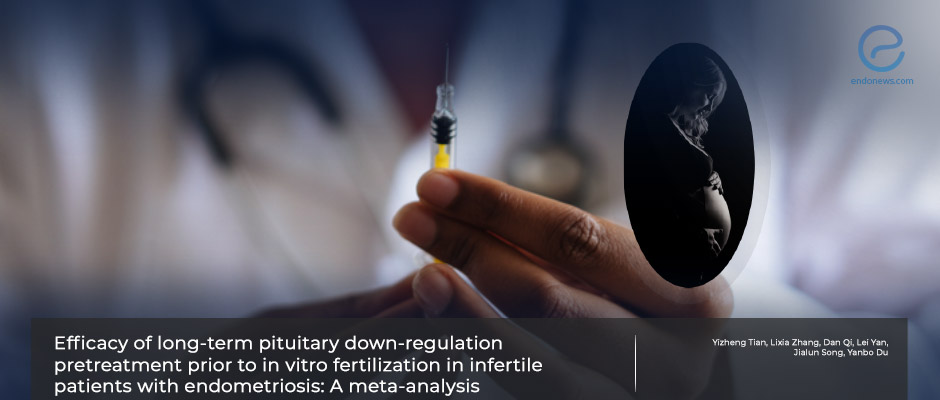




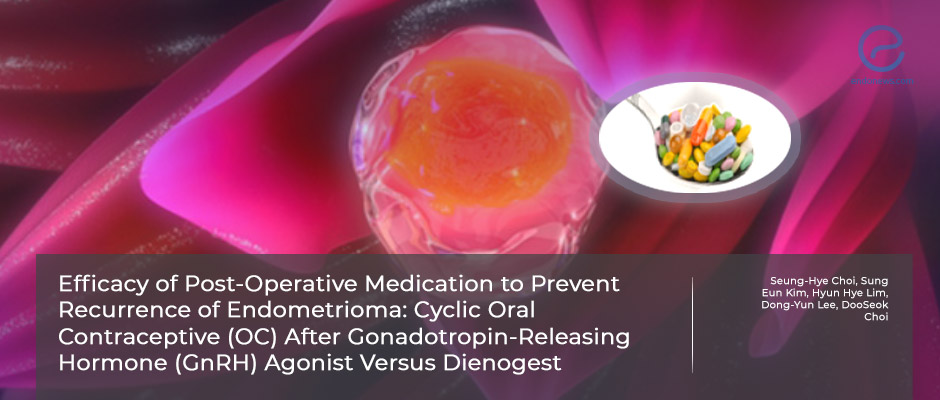

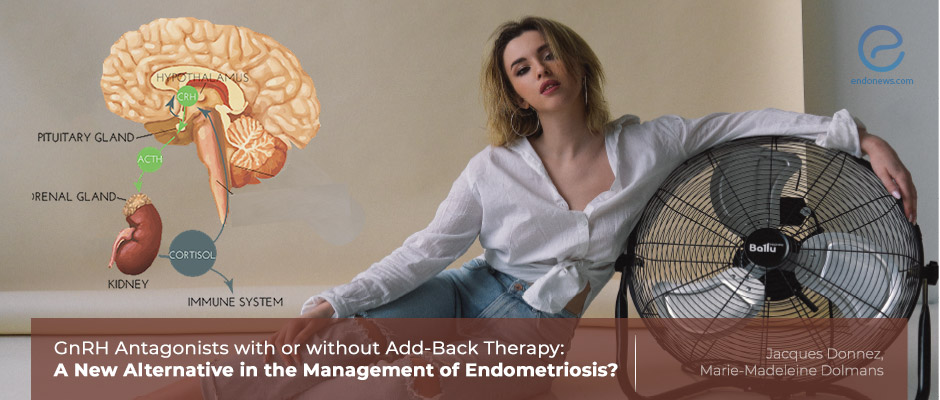

 By Eylül GÜN
By Eylül GÜN





 By Yu Yu
By Yu Yu

 By Irem Onur
By Irem Onur


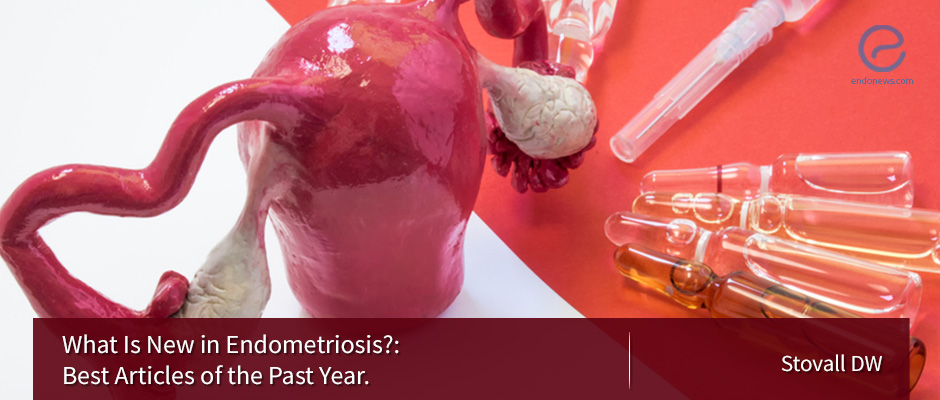
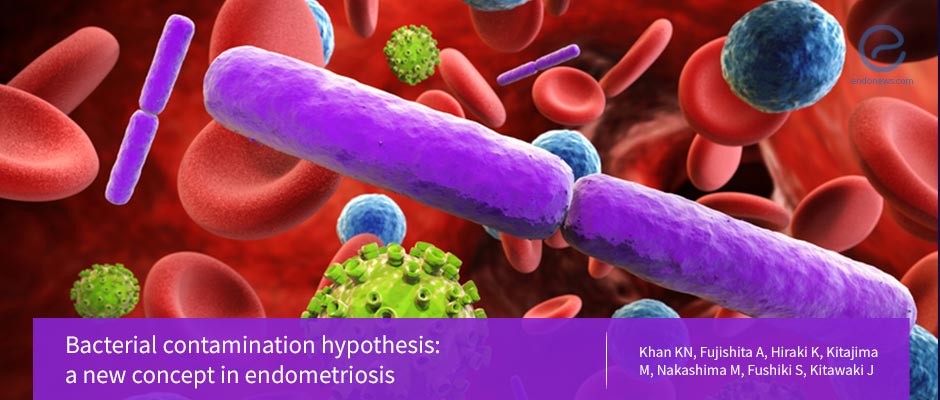

 By Kasthuri Nair
By Kasthuri Nair

 By Dr. Youngran Park
By Dr. Youngran Park



